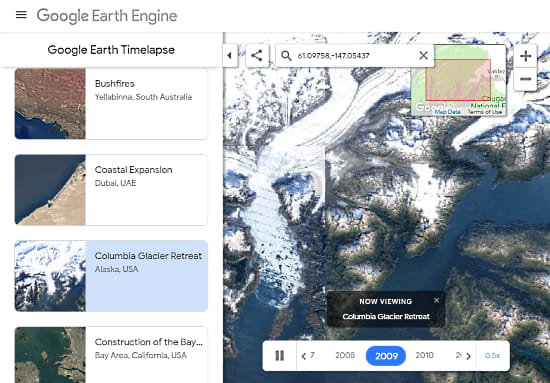This article covers a feature of Google Earth Engine that lets you watch how Earth has changed in the last 35 years. If you have used Google Earth Pro on Desktop, you might have noticed that it offers historical imagery of the Earth. Google Earth Engine is a more versatile tool that combines a multi-petabyte catalog of satellite imagery and geospatial datasets. This provides the planetary-scale analysis capabilities which can be used by researchers, developers, and scientists to observe the changes to the Earth’s surface.
Google Earth Engine has a timelapse viewer that lets you watch how the top surface of Earth has changed in the last 35 years. It combines all the historical satellite imagery taken from the beginning and create a timelapse with that. With this timelapse viewer, you can explore the earth and gain insight into the changes.
Also read: How To Measure Distance In Google Earth
Watch How Earth Has Changed In Last 35 Years
To watch how Earth has changed over time in the last 35 years, simply visit the Timelapse viewer and select the location that you want to observe. The viewer indexed some of the drastic changes on the left side covering bushfires, coastal expansions, glacier retreats, constructions, deforestation, drying seas, infrastructures, and more.

You can select any of these listings and observe the change that happened over time. The viewer zooms in to the selected location and plays a timelapse from 1984 to 2018. You can pause the timelapse at any given point for deeper observations and change the playback speed as well. Also, you can manually select a year from the year-slider to view the imagery of that year.
Similarly, you can observe any area on Earth with this viewer. All you have to do is visit that location in the viewer. You can either manually visit the location or find it with search tool.
Wrap Up
Google Search Engine’s Timelapse viewer is a nice tool to observe the changes happened on the Earth’s surface over time. It has great application for scientific work and can also be very helpful to demonstrate the environment changes.